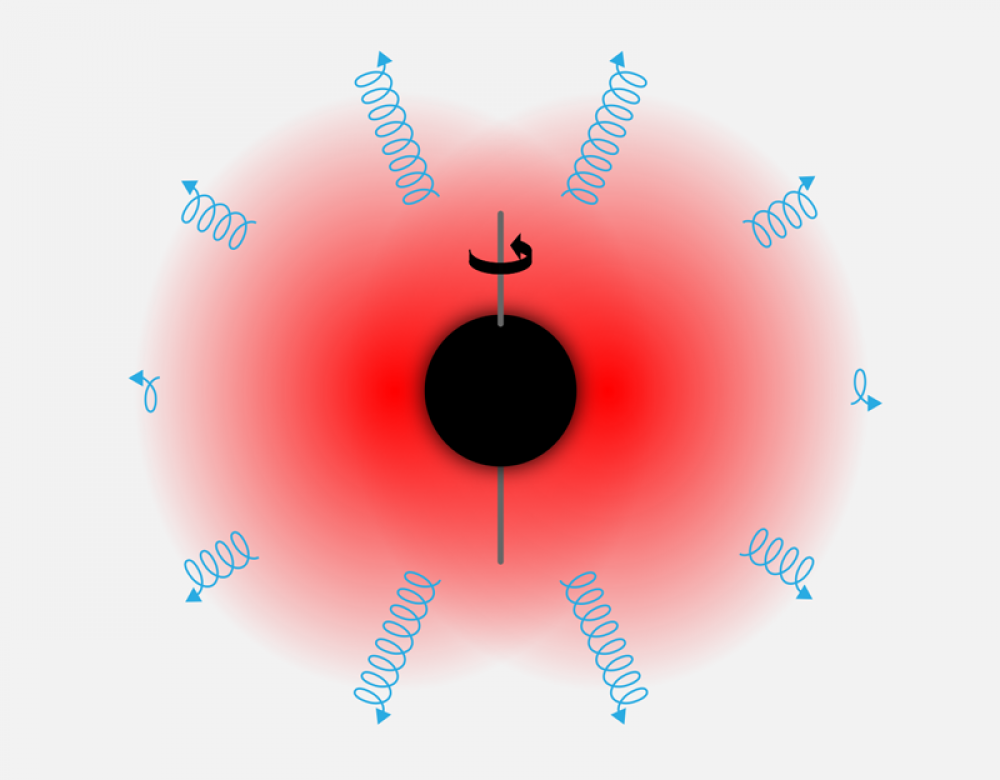In a remarkable work published in Physical Review Letters (PRL) as an Editor's suggestion, William East and Frans Pretorius (E&P) studied the non-linear growth of the superradiant instability. In a subsequent paper to appear also in PRL, Gr@v members C. Herdeiro and E. Radu showed that the endpoint matches hairy black holes discovered by the Gr@v team. Read here a viewpoint article by Sam Dolan on the E&P paper.
It has been known for decades that bosonic particles with a very tiny mass can efficiently extract some of the rotational energy from a rotating (Kerr) black hole, growing a "cloud" of these particles around the black hole horizon. This process is based on the phenomenon of "superradiance" (which is not exclusive to black holes) and in this context it leads to a runaway behaviour that was called the "black hole bomb" by W. Press and S. Teukolsky in 1972. The endpoint of this runway, however, has been an intriguing mystery in black hole physics for many years.
P&E showed, by successfully running challenging numerical simulations, that the extraction stalls when the black hole has lost enough rotational energy and angular momentum and it synchronises with the (rotating) cloud of ultralight particles. In a way, this resembles tidal locking in two body Newtonian gravity systems.
Equilibrium configurations between a black hole horizon and the effective field caused by these ultralight particles have previously been discovered as a stationary solution of the appropriate Einstein equations by Gr@v researchers Carlos Herdeiro and Eugen Radu. The first such family of solutions were called Kerr black holes with scalar hair, but they are not really Kerr black holes; it is a family of black hole solutions that reduces in some limit to Kerr black holes. Subsequently, these solutions were generalised for a cloud of massive vector particles: Kerr black holes with Proca hair.
Following the E&P paper, Gr@v researchers gave evidence that the equilibrium (quasistable ?) configurations obtained by E&P are indeed these hairy Kerr black holes.
The story is not, however, complete. Two outstanding questions are: 1) is this the final state or a transient state in the process? 2) If one wishes to make contact with fundamental particle physics, what are these ultralight particles? An intringuing suggestion is a landscape of tiny mass particles, suggested by the string theory axiverse, which are akin in some ways to a particle known as the Quantum Chromodynamics (QCD) axion. Another suggestion is an effectively massive photon due to the interstellar plasma.
